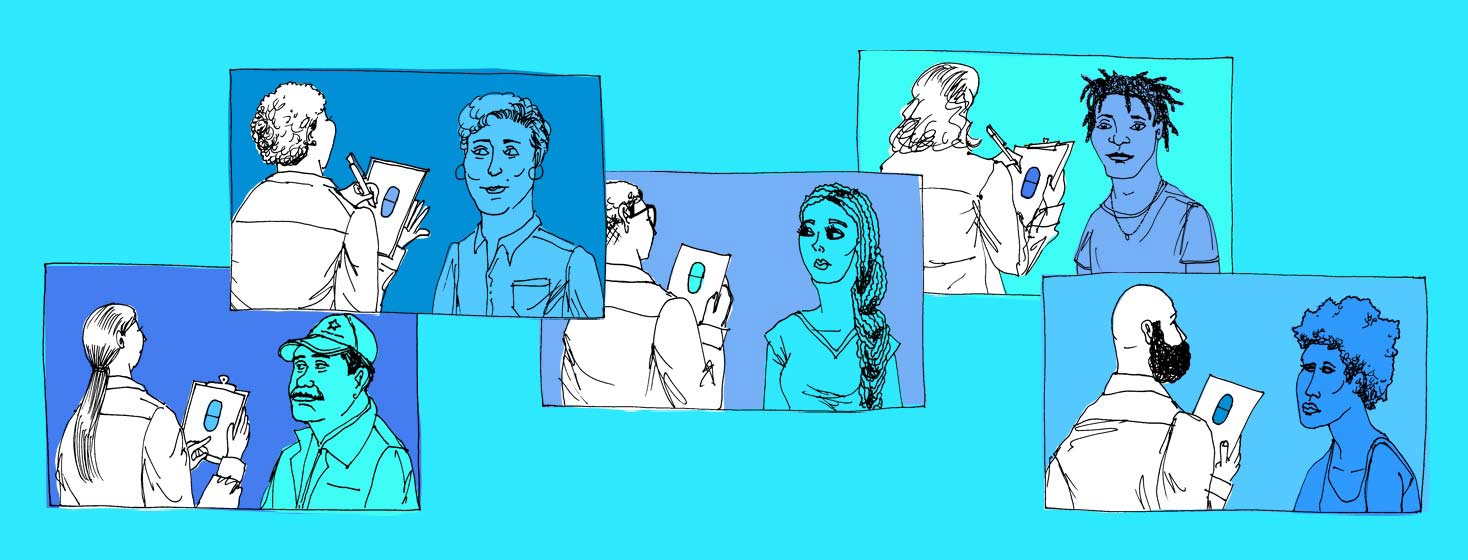Focus on PrEP: Update to CDC Guidelines
Scientists at the Centers for Disease Control and Prevention (CDC) recently came out with a powerful guideline updates to prevent new cases of HIV. The December 2021 document centers PrEP as an important tool to lower HIV cases. It acknowledges disparities in PrEP availability and focuses on getting PrEP to the people who could benefit from it the most.1
PrEP use in the United States
PrEP has been available since 2012. It works very well. It’s up to 99 percent effective at preventing a person acquiring from HIV.2
But not everyone who could use it is getting it. Numbers from 2020 estimate that only about a quarter of the 1.2 million people in the US that PrEP could protect are taking it. The CDC states that equitable provision of PrEP to populations at highest risk of getting HIV is not happening.3
Specifically, they list these groups of people who are not being reached well:3
- Teens and young adults
- Black and Hispanic/Latino people
- Cisgender women (particularly Black women)
- Transgender people
- People living in southern US states
Featured Forum
View all responsesAn update to CDC PrEP guidelines
The updated guidelines are an effort to close these gaps. The document gives new guidance to people who prescribe PrEP—and to those who do not yet. Here are some of the important points:
Healthcare providers need more education and support to get PrEP to where it is needed most. The guidelines recommend:
- Educating healthcare providers about who can benefit from PrEP, financial assistance programs for those who need support to afford the drugs, and a national “PrEPline” that doctors can call to quickly get questions answered.
- Health care providers should talk about PrEP with all sexually active adults and teens. This includes primary care providers, OB/GYNs, and those giving care for substance use and sexually transmitted infections (STIs).
- A call for healthcare providers to do better. There’s a focus on getting PrEP awareness and prescriptions to people it could help.
- The authors encourage clinicians to prescribe PrEP to anyone who asks. It acknowledges that not everyone will feel comfortable discussing risk factors with their doctor, and gives people credit for knowing what is best for themselves.
- Care providers should not just give a prescription for PrEP. They should also provide education on risk reduction and support for taking the meds consistently.
They also aim to make it simpler for the person taking PrEP by:
- Drug options include Truvada (there’s also a generic version, F/TDF) and Descovy (F/TAF). And there’s a new one called cabotegravir, also known as CAB. It is an injection given every 2 months.
- People who are trying to get pregnant or who are pregnant or breastfeeding can take F/TDF. This is especially important because there is more chance of HIV transmission at these times.
- Doctors can use telehealth visits to start and monitor PrEP, which makes it more accessible to patients.
- Blood tests do not need to be done as often as originally thought. They now recommend HIV testing every 3 months, and kidney function tests every 6 to 12 months.
- The CDC approved rapid fingerstick tests that give HIV results right away. This allows people to start PrEP the same day they come in for their appointment.
Why do I need to get HIV testing when I’m taking PrEP?
If PrEP is so good at preventing HIV, you may wonder why HIV testing is needed so often. The reason is that doctors found some people who take PrEP soon after acquiring HIV developed drug-resistant strains of the virus. This makes it more difficult to treat HIV. People who took PrEP consistently did not have any resistant virus strains. So people living with HIV will stay healthier if they take ART treatment, rather than PrEP.1
Ending HIV will require both effective treatment and prevention. The CDC has a big goal: cutting new cases of HIV in the US by 90 percent by 2030. These updated guidelines support healthcare teams and people taking PrEP to use this important tool to end HIV in the US.4
 Dr. Audrey Sheridan is a board-certified obstetrician-gynecologist (OB-GYN) and also a caretaker for her dad. Dr. Sheridan is inspired by people finding their way through life-changing medical situations with resilience and is interested in how we can increase our mental durability in the face of the unpredictable.
Dr. Audrey Sheridan is a board-certified obstetrician-gynecologist (OB-GYN) and also a caretaker for her dad. Dr. Sheridan is inspired by people finding their way through life-changing medical situations with resilience and is interested in how we can increase our mental durability in the face of the unpredictable.
Join the conversation